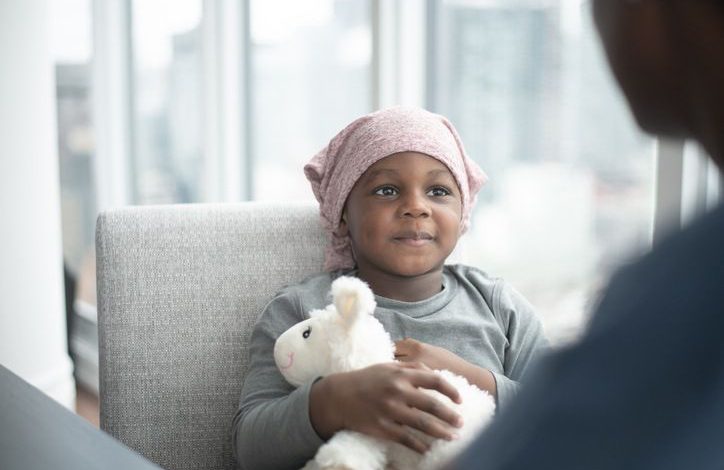Understanding childhood cancer

Common types of childhood cancer include leukaemia (begins in blood-forming tissue such as bone marrow), lymphoma (begins in the cells of the immune system), neuroblastoma (begins in certain nerve cells), retinoblastoma (begins in the tissues of the retina), Wilms tumour (a type of kidney cancer) and cancers of the brain, bone and soft tissue.
Unlike cancer in adults, the vast majority of childhood cancers do not have a known cause. Many studies have sought to identify the causes of childhood cancer, but very few cancers in children are caused by environmental or lifestyle factors. Cancer prevention efforts in children should focus on behaviours that will prevent the child from developing preventable cancer as an adult.
Childhood cancers are often difficult to detect in their early stages because the associated signs and symptoms are nonspecific, insidious in onset and mimic more common disorders.
When identified early, cancer is more likely to respond to effective treatment and result in a greater probability of survival, less suffering and often less expensive and less intensive treatment. Significant improvements can be made in the lives of children with cancer by detecting cancer early and avoiding delays in care.
A correct diagnosis is essential to treat children with cancer because each cancer requires a specific treatment regimen that may include surgery, radiation therapy, chemotherapy, stem cell transplants, and/or targeted therapy. Targeted therapy uses drugs or other substances that attack specific cancer cells with less harm to normal cells.
Early diagnosis consists of three components: awareness by families and accessing care, clinical evaluation, diagnosis and staging (determining the extent to which a cancer has spread) and access to treatment.
Once treatment is finished, the health care team will set up a follow-up schedule.
For many years after treatment, it is very important that children have regular follow-up exams with the cancer-care team. As time goes by, the risk of the cancer coming back goes down. Doctor visits might be needed less often but they are still important because some side effects of treatment might not show up until years later.
Childhood cancer survivors are at risk, to some degree, of several possible late and long-term effects of their cancer treatment. It’s important to discuss what these possible effects might be with your child’s medical team.
The risks for each child depend on a number of factors, such as the type of cancer, the specific cancer treatments used, the doses of cancer treatment, and the child’s age at the time of treatment.
It’s important to discuss possible late side effects with your child’s health care team and to make sure there is a plan to watch out for these problems and treat them, if needed.
Palliative care relieves symptoms caused by cancer and improves the quality of life of patients and their families. Not all children with cancer can be cured, but relief of suffering is possible for everyone.
Screening is generally not helpful for childhood cancers. In some select cases, it can be considered in high-risk populations. For example, some eye cancers in children can be caused by a gene mutation that is inherited, so if that mutation is identified in the family of a child with retinoblastoma, genetic counseling can be offered and siblings monitored with regular eye examination early in life. Genetic causes of childhood cancers are relevant in only a handful of children with cancer.
Featured Image: A child receiving treatment. Source: [Docwire News].




